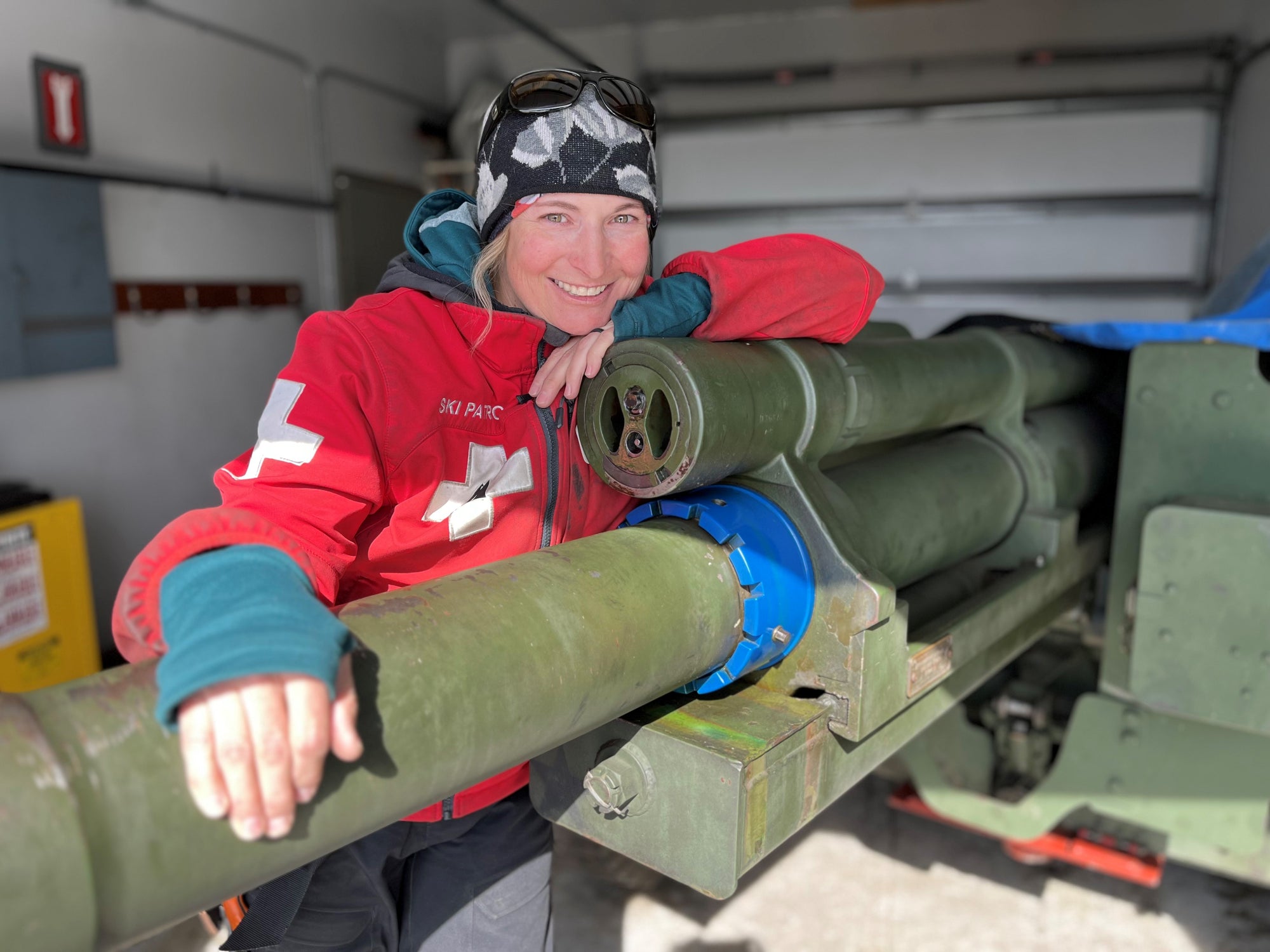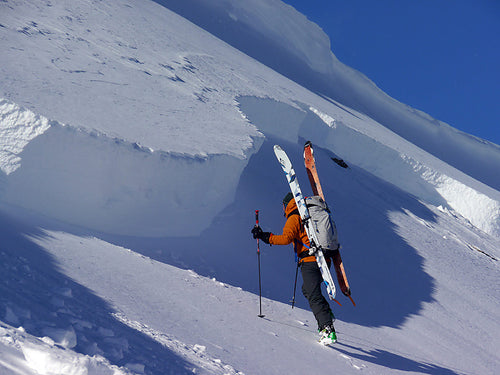As Kirkwood Mountain’s ski patrol artillery manager, Amy Armstrong is in charge of the high-powered machinery that’s used to detonate slopes during big storms.
[Note: This is part three of a series called The Invisible Hands of Avalanche Work, a five-part series that’s brought to you by Flylow and the American Avalanche Association. The point of these stories is to get to know some of the hard-working, behind-the-scenes folks who conduct the critical avalanche work that keeps the rest of us safe.]
Amy Armstrong has been a ski patroller at Kirkwood Mountain, near South Lake Tahoe, in California, since 2011. Kirkwood is one of a small handful of ski areas in the U.S. that’s permitted to use howitzers, on loan from the U.S. Army, as part of its avalanche mitigation, and it’s Armstrong’s job to manage the ski area’s artillery program. It’s an exciting job, with safety at its very core. We spoke to Armstrong before her winter kicked off about the moments when she loves her job (see: glory laps, her patrol family, and sunrises) and the moments when she’s not quite sure what she signed up for.

My parents prioritized skiing. My sister and I were on skis as soon as we could toddle around. I grew up in Little Cottonwood Canyon, Utah. When I was young, dad worked at ski school at Alta and mom worked in a medical clinic at Snowbird. Alta is where I learned to ski.
As soon as I finished college, I found the smallest place I could, which ended up being Silverton, Colorado. In those days, the town had a wintertime population of 350 people. I was traveling around with my truck and I found Silverton. That place stole my heart. I moved there, got a job at the mountain, and started climbing my way up the ranks.
In 2011, a friend talked me into coming out to Tahoe. I got a job at Kirkwood as a ski patroller. My first day at work, I was handed a backpack of explosives and was told to keep up. This will be my 13th winter at Kirkwood. I’m a Kirkwood lifer.
Ski patrol rookies go through extensive training. It’s not just throwing them into the dark on a stormy morning. The senior patrollers need to watch every move. It’s a learning curve.
In the beginning, I loved it for the excitement, the powder, the novelty of getting to do these things that are so unique to the typical human existence. Since then, it’s become more about the community. At Kirkwood, we’re a small patrol. Part of the mindset when you go out on a route is that you’re responsible for your partner and they are responsible for you. As a greater patrol family, that closeness has come to mean a lot to me.






